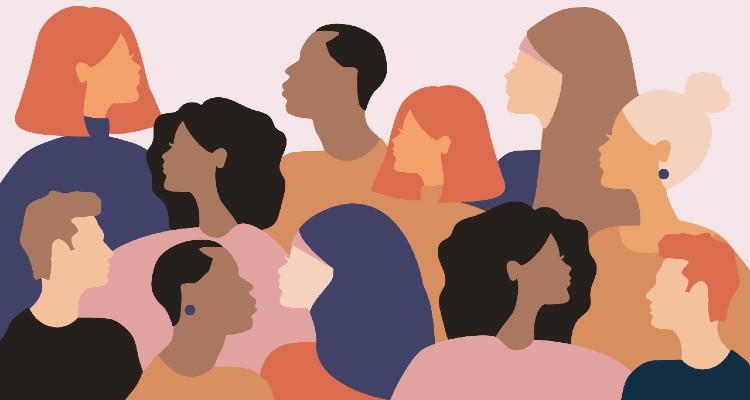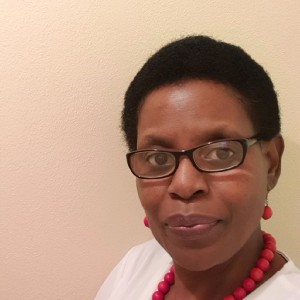Wed 01 Dec 2021

Race to Equality and BAME into Leadership are flagship events offering CPD-certified training on the skills and the tools for achieving racial inclusion at work
By Murielle Gonzalez
How to address race equality in the workplace? The question is a hot topic in the diversity and inclusion space. Organisations that embark upon the journey need their teams to gain the skills to deal with difficult conversations with individuals who may have experienced their ethnicity as a barrier to career progression.
There are many tools available to organisations, but two are key: intersectionality and cultural intelligence.
The intersectionality framework is an integral part of realising diversity and inclusion in the workplace — understanding its role in your D&I action plan is vital to leverage difference in your workforce, turning it into an asset for the organisation.
But there's more to intersectionality than meets the eye. Intersectionality defines how different facets of identity contribute to our unique perspective, showing how discrimination and privileges overlap. Therefore, embracing the intersectionality framework is crucial to fostering a culture of respect and inclusion in the workplace.
Many factors shape the intersectionality framework of an organisation, varying dependent on the unique lived experiences and backgrounds of every individual in the teams — age, race, gender, disability, and social mobility, for example. The interplay of these factors at individual levels affects the workplace in terms of its performance, culture, and outcomes.
Patricia Chinyoka (pictured), diversity advisor of Business in the Community (BITC), reflected on the importance of intersectionality for supporting colleagues of Black, Asian and Minority Ethnic (BAME) groups at a recent Race to Equality event. She named intersectionality among the factors any organisation needs to consider for an inclusive culture change. But how can organisations embrace intersectionality?
Understanding lived experiences
Speaking at Dods Diversity & Inclusion's flagship event in the race equality space, Chinyoka recalled the lived experience of Nelly, a Black professional woman in tech who participated in Project 28-40, a ground-breaking study of women’s experiences in the workplace, with 25,000 responders.
Chinyoka said: "Nelly told us that she knew that there was a game going on. She knew the rules, and she knew how she was supposed to behave, from how to dress to how to talk, but she didn't want to play. Nelly knew that she has intersections that impact her progression in perhaps a negative way compared to others."
Nelly grew up in Africa, facing several challenges. She identifies as a bisexual woman, and therefore she couldn't afford to get on well in society. When she moved to the UK to continue her education, she found that her race was causing her some disadvantage — she also encountered barriers for being a woman in a classroom where men were the majority.
"There are many stories like Nelly's in your organisation," said Chinyoka. She explained that the different traits that make up the personalities of individuals are based on different minority identities, including ethnicity, sexual orientation, age, and gender.
"Some of these [characteristics] are areas of disadvantage, and some others are areas of privilege," she added. "In Nelly's story, her areas of privilege were her age — a young, well-educated and well-spoken woman – and her areas of disadvantage were her race and gender."
Many people are experiencing similar challenges to Nelly's in your teams, so how can organisations know where to start the road to inclusion?
For Chinyoka, one of the steps organisations can take before embarking on a D&I journey is to examine the entire employee lifecycle. "We encourage organisations to take a deep dive and look beyond the nine protected characteristics of the Equality Act 2010 because all of these intersections can impact individual progressions or opportunities in the workplace," she said.
Action plan
What does intersectionality mean for employers? Before addressing the question, it is vital to understand some of the barriers in organisations that hinder diversity and inclusion — the unconscious biases and the organisational and structural cultures that pave the way to systemic discrimination.
For Chinyoka, another element that gets in the way of realising a D&I action plan is the lack of will. "Organisations have policies in place for recruitment, policies for progression and succession planning, but may lack the will to do the right thing," she noted.
Chinyoka answered the earlier questions by suggesting an action plan built on three areas: leadership, allyship and connection. "Look at your leadership and work with your leaders to make sure that they are listening and acting according to the voices raising concerns and enable them to put in place policies that are more inclusive," said Chinyoka.
For allyship, Chinyoka noted that it's about engaging people from the majority groups to step up, stand up, and speak up, challenging areas in the workplace that are not inclusive.
"Connecting employee networks is really important," said Chinyoka, adding that connecting with your communities is also part of it. "Sometimes, the lack of visible role models for certain groups of people in your teams may be inadvertently sending the message that they don't belong there," she explained.
Cultural intelligence in the workplace

How can organisations put some of the suggested actions into play? For D&I researcher Delia Mensitieri (pictured), openness for diversity is crucial — and cultural intelligence is a skill that has been found to have a relationship with openness for diversity.
A simple definition of cultural intelligence is the awareness of different cultures and the ability to manage cultural diversity around them.
"If you have cultural intelligence, then it's easier for you to be able to include people around you, and it's easier for you to manage diversity," she told Dods D&I ahead of the Fostering Conscious Inclusion event. If you're interested in this event, stay tuned for the 2022 edition of this CPD-certified day of training.
Mensitieri noted that there are some very progressive voices within organisations. These are voices that might have a lot of experience working with different cultures — from growing up in a big city or being raised in a family with multiple backgrounds. So, these voices are said to have higher cultural intelligence.
However, some people don't have the experience necessary to develop cultural intelligence, and organisations are challenged because you can't ask them to make the jump, levelling up to these very progressive mindsets.
"It doesn't work like that," said Mensitieri. "That won't work because it puts too much pressure on people. On the contrary, it is very important that organisations guide individuals with little steps into the understanding of diversity and inclusion," she added. For Mensitieri, the organisation's ability to listen to these people's objections is also essential.
BAME into Leadership Spring Conference will return on 24 March 2022. Join us in Birmingham to receive hands-on advice, practical steps and coaching on enhancing the capabilities & leadership opportunities for Black, Asian & Ethnic Minority civil servants and the wider public sector.
ABOUT THE AUTHOR
Murielle Gonzalez, content strategy manager at Dods Diversity & Inclusion, is an experienced journalist and editor. She can be reached on murielle.gonzalez@dodsgroup.com.
View all news